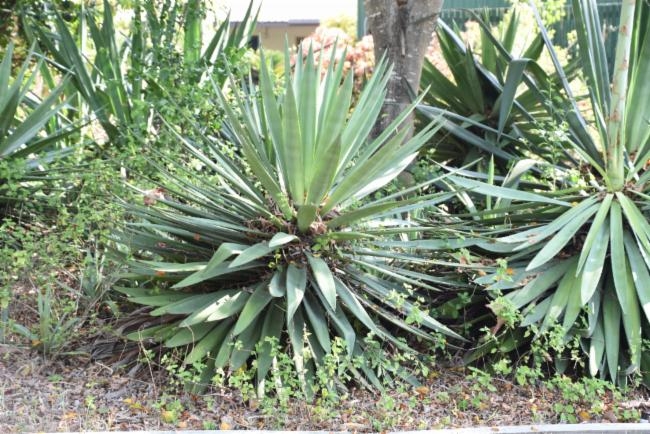Sisal
(Agave sisalana)
Sisal (Agave sisalana)
/
/

Kenneth Foster
CC BY 4.0
























































Estimated Native Range
Summary
Sisal is valued for its low water requirements, making it suitable for xeriscaping and arid garden designs. It is commonly used for its fibers in the production of rope, twine, and a variety of other materials, including paper, cloth, footwear, hats, bags, carpets, geotextiles, and dartboards. In cultivation, it requires full sun and well-drained soil, tolerating a range of soil types from sandy to rocky. While it is generally pest-resistant, it can be susceptible to weevil infestations, which can damage the plant and reduce fiber quality. Due to its robust nature, sisal can become invasive in suitable climates outside its native range, so care should be taken to manage its spread.CC BY-SA 4.0
Plant Description
- Plant Type: Succulent
- Height: 4-6 feet
- Width: 6-7 feet
- Growth Rate: Rapid
- Flower Color: Yellow, Green
- Flowering Season: Summer
- Leaf Retention: Evergreen
Growth Requirements
- Sun: Full Sun
- Water: Very Low, Low
- Drainage: Fast
Common Uses
Bee Garden, Bird Garden, Drought Tolerant, Edible*Disclaimer: Easyscape's listed plant edibility is for informational use. Always verify the safety and proper identification of any plant before consumption., Fire Resistant, Hummingbird Garden, Low Maintenance, Rabbit Resistant, Rock Garden, Showy Flowers
Natural Habitat
Native to arid environments in Southeast Mexico
Other Names
Common Names: Maguey De Sisal, Sisal Hemp, Agave, Century Plant, Dali, Garingboom, Hemp-Plant, Malina, Mescal, Natali
Scientific Names: , Agave sisalana, Agave rigida var. sisalana, Agave amaniensis, Agave rigida subsp. sisalana, Agave sisalana f. armata, Agave sisalana var. armata, Agave segurae, Agave sisalana subsp. armata, Furcraea sisaliana,
GBIF Accepted Name: Agave sisalana Perrine